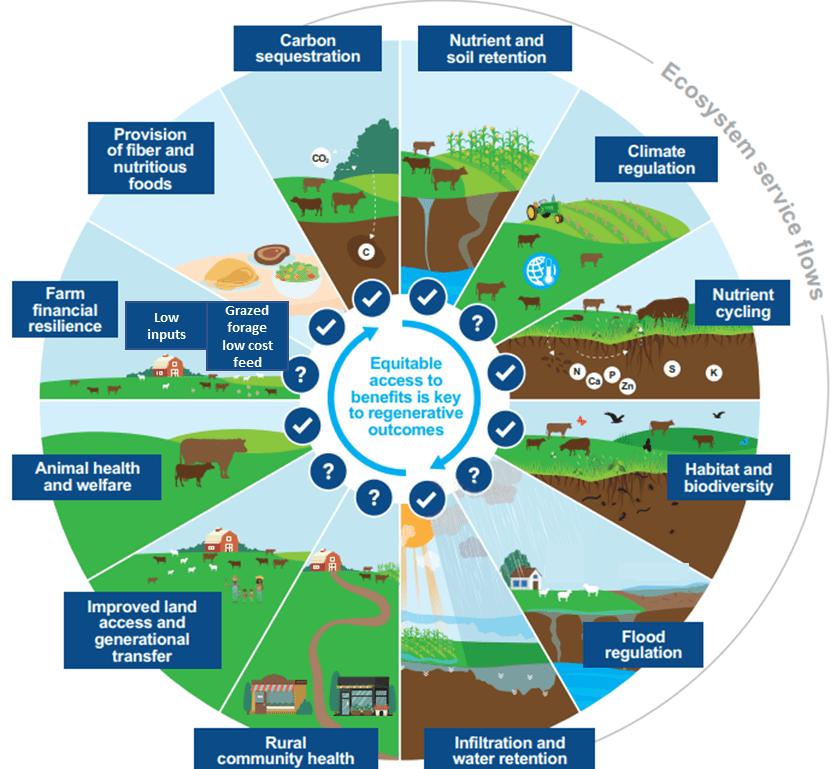The four R’s: renewal, recovery, replacement and repair of ecosystems.
.
These pages have looked at ‘regenerative agriculture’:
How to manage our farmland better for wildlife – Vision Group for Sidmouth
Agroecology: a science, a movement, an agricultural practice. – Vision Group for Sidmouth
.
Here, though, is an excellent overview from Dr David Cutress of Aberystwyth University: click on the link below for the complete piece:
.
Regenerative agriculture: buzzword and beyond
- Regenerative agriculture aims to shift away from productivity and sustaining outputs towards the four R’s, renewal, recovery, replacement and repair of ecosystems.
- Many farmers already use individual regenerative practices but may need support to combine more of these into total holistic systems which are still profitable.
- Regenerative agriculture may be a buzzword, but its spirit fits in well with the UK government’s perceived role for agriculture as a global asset moving forwards.
What is regenerative agriculture?
Regenerative agriculture/farming is nothing new and is often used interchangeably with concepts including conservational agriculture and agroecology. The concept was originally discussed over 40 years ago and was adapted from practices and ideals in organic farming.
A pivotal text in 2015, which indicated regenerative organic agriculture could reverse climate change has led to regenerative agriculture becoming a buzzword in the agricultural sector and the media.
However, regenerative agriculture is a difficult concept to define and often attempting to do so can limit the scope for agricultural systems to work in harmony with nature. However, an agreed key aspect of regenerative agriculture is to move away from sustainable agriculture’s aims “to reduce or do no harm” or “apply fewer chemicals” towards an approach where “restoring”, “improving” and “providing benefits” are the focus. Many look at regenerative farming as aiming to restore degraded soils and the associated biology, but this can be just one element. Other than soils, regenerative agriculture should also impact biodiversity, habitats, water cycles, forests, social gains, and landscapes with the holistic broad impacts of agriculture being considered.
Regenerative agriculture could, therefore, be considered a semi-closed system that uses aspects of a circular economy to minimise inputs and detrimental outputs (such as waste) in several forms.
The strategy has seen significant development as a concept in the US with a recent report estimating investments totalling $47.5 billion in regenerative systems. With several warnings in the last 10 – 20 years towards the requirement of a fundamental shift away from industrialised agriculture, what can regenerative agriculture offer?
.

.
Regenerative agriculture: buzzword and beyond | Business Wales
.
image: Confirmed and potential impacts of regenerative grazing practices taken from Spratt et al. (2021)